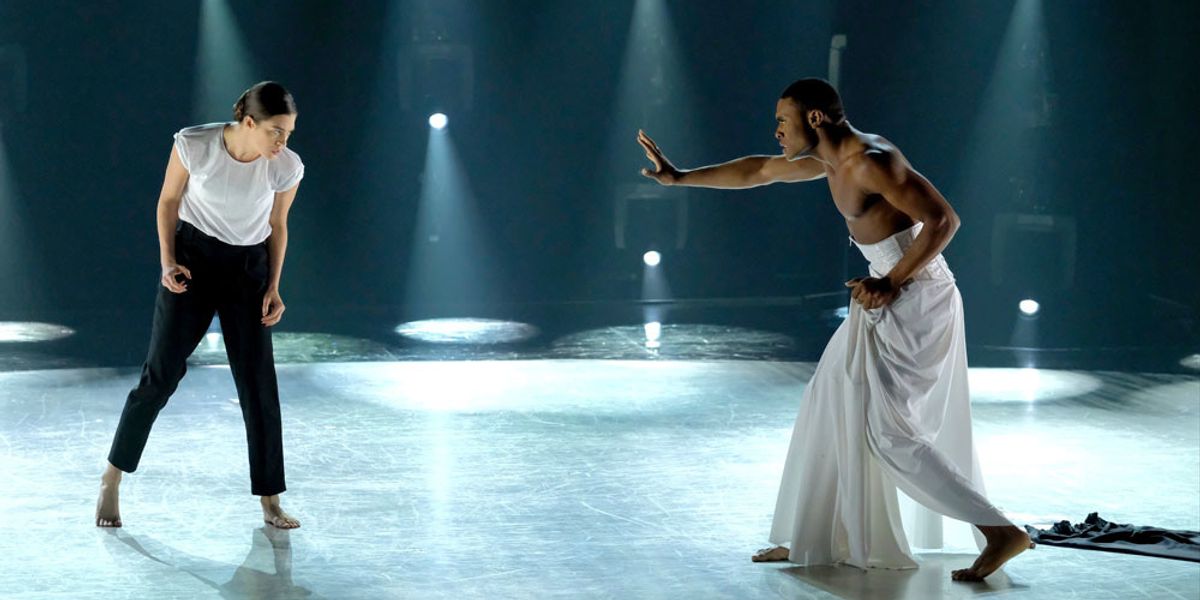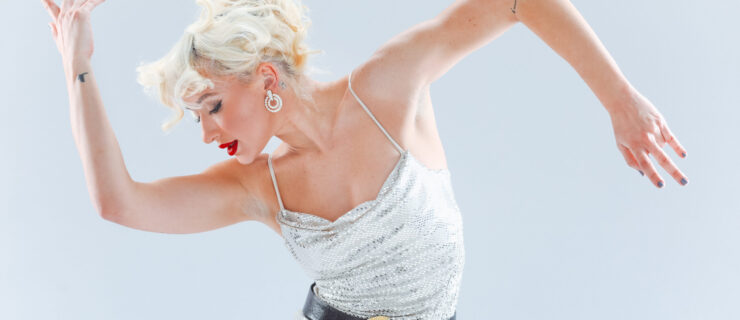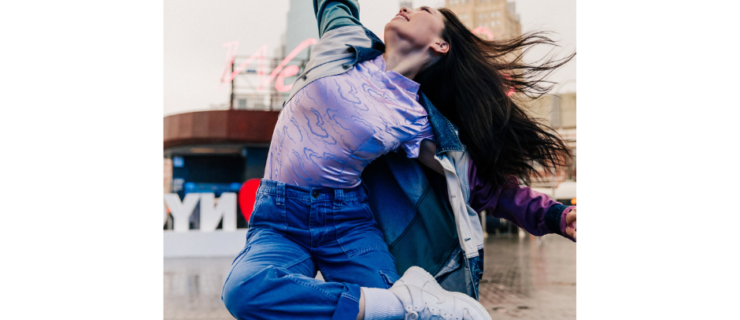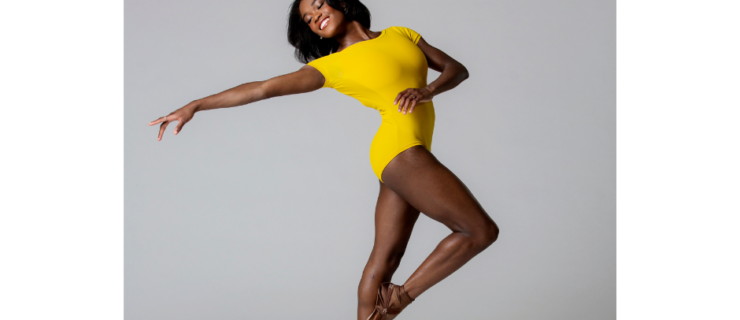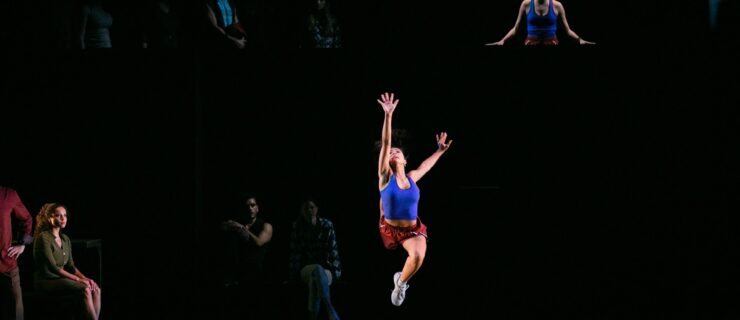6 Dancers Dish on Their Toughest Roles of All Time
As an audience member, it’s easy to overlook how much work went into the performance onstage—a dancer’s job is to make it look effortless, after all. But every pro has tackled a role that made them doubt themselves, whether by testing their stamina, pushing them out of their comfort zones, or touching on their vulnerabilities and insecurities. Here, six dancers share some of their toughest roles, how they made it through, and what they learned.

Hickman and Sieve perform “It Takes a Lot to Know a Man” (Adam Rose, courtesy FOX)
Darius Hickman
Dancer, “So You Think You Can Dance” Season 15
“It Takes a Lot to Know a Man” was my last duet on “SYT.” Choreographed by Travis Wall, it was very physically demanding, and I had to be very emotionally vulnerable. That was difficult for me to do on television. I felt like it was a big responsibility. I knew I needed to be honest with myself and let my emotions be natural for that piece to work. I think that’s what made it so special, because it felt real. It was hard growing up being gay and black. My outfits were never casual. I always wore shimmer, glitter, and whatever I felt like. But I would get backlash, and that hurt. In the piece, Travis wanted me to embrace my feminine self and my masculine self, showing both sides of me. In rehearsals, the thing that really helped was remembering how important the show was to me. I dance to show people that anything is possible. When you’re in a competition setting, it’s very hard to not worry about what other people are thinking, but at the end of the day it’s not for them. It’s for you.

Cassandre Joseph in “Human Fountain” (Antoine Douaihy, courtesy STREB Extreme Action)
Cassandre Joseph
Dancer and associate artistic director, STREB Extreme Action
There’s a piece called Human Fountain. It’s a scaffold that has three tiers, and it’s fashioned after the Bellagio Fountains in Las Vegas, NV. The idea is that we would be essentially replacing the water and creating shapes, running and hurling ourselves off the platforms in many different orientations. I was a gymnast growing up, so my training was broken down into systems of progressions—learning and mastering a group of skills, then moving on to the next level. That’s how I learned how to move. Human Fountain became very challenging because it’s harder to create progressions when you only have three platforms. The choreography requires not only a lot of commitment and trust in yourself, but also speed, agility, and strength. Most STREB pieces do inspire some kind of fear, but this was different. I kind of had to get to know myself again. Before rehearsal, I would take five to 10 minutes to sit down and go over my strengths. I would jot down different ideas, and come up with progressions in my own right. I never really got over the fear, but I’ve armed myself with enough methods to keep that fear from stopping me. You don’t just rise to the occasion—you sink to the level of your training. You have to remember it’s not a momentary rise: You’re armed with everything you need to do that skill, because you have been trained.

(Left to right) Anabel Katsnelson, Tyler Maloney, Erica Lall, and Arron Scott in “In the Upper Room” (Marty Sohl, courtesy American Ballet Theatre)
Arron Scott
Dancer, American Ballet Theatre
During ABT’s spring season, I had to step into every performance of Twyla Tharp’s In The Upper Room. The ballet’s music is pulsating, and the physical exertion is as clear as day to the audience, so it’s really exciting to dance. This was my first time doing it on the Metropolitan Opera House stage, which was an extra challenge because it’s just so massive. There are a couple exits where you literally only have four seconds to run up three wings and enter again. It’s all about pacing, and the more you do a role, the more you can find times of calm to breathe, and then reload for the next big push. No matter how you try to fuel, you get to a point and you have to dig really deep and realize you’re not going to feel like this forever, you’re going to be fine. Music helps, too. I’m a very musical dancer—it drives me and gives me energy. It’s a transcendent experience performing this ballet, and there’s nothing quite like the feeling as a cast of being able to get through it. Everyone’s absolutely exhausted, but seeing your fellow dancers pushing onstage to their max somehow reenergizes you, reignites the bit of fire that you didn’t know you had.

Solomon Dumas in Alvin Ailey’s “Revelations” at the 2019 Fire Island Dance Festival (Scott Shaw, courtesy Alvin Ailey American Dance Theater)
Solomon Dumas
Dancer, Alvin Ailey American Dance Theater
There’s a solo by Robert Battle called In/Side, and it’s performed to the music of “Wild Is the Wind,” by Nina Simone. It’s one of the most challenging pieces that I’ve ever done because you’re by yourself. In a lot of work, you can rely on the energy that’s shared onstage between your castmates, but with this it’s just you for six minutes. When I perform it, it’s about my innermost vulnerable thoughts. The costume is just a dance belt, and the piece is extremely physically challenging. You’re throwing yourself around the stage, you’re turning, you’re jumping. There have been times when I’ve been lost onstage because the lighting is so dark. I have to create a story just so the audience understands the journey of the character within the solo. I’ve had to go on the stage when no one else is in the theater, and find time and space by myself to go deep within, because for me it’s not something that just happens. We don’t often think about that emotional commitment, and the fact that you have to be able to project it. It has to reach the back of the house. That’s one thing that helped my dancing—you may know the steps, the spacing, the musicality—but you have to be able to add that acting aspect.

Courtesy Thryn Saxon
Thryn Saxon
Dancer, Sleep No More
For the main role that I do, I had to shave my head. That was a huge transition for me aesthetically speaking and also emotionally, in terms of what it meant to give myself over and commit to my art. The character that I play is incredibly physical and powerful. The theme of the show is also quite intense and asks a lot of you. You have to immerse yourself in these heavy scenes, but also not let them overcome you. My character has no hair, and living with that component in my own daily life was challenging in the beginning—I felt like everywhere I went, I was her. I’ve never experienced such a close-knit connection between my performance life and my everyday life. Then I started to dissect what components of this character I already had in me, and now I can definitively say that her choices and parts of her world have made me have more conviction about my choices as a woman, more of a sense of my sensuality and the power behind that. Often we see images of a female with long, luxurious hair. I didn’t realize how much I’d been affected by those images until I didn’t have any hair. It’s been an amazing experience and makes me think about other things in my life that I’ve not yet tried. It opened up a whole new world for me.

Anissa Lee, far left, with her fellow Syncopated Ladies (courtesy Chloe & Maud Productions)
Anissa Lee
Dancer, Syncopated Ladies
Rise Up
is one of our most powerful pieces. We’re always so positive and we uplift, and usually that means to bring joy or some type of sexy flair. But with Rise Up, in the particular political climate we live in right now, and with all the things going on in the world, it’s a little triggering. It reminds us of the gratitude we have to be surrounded by things we love, and when hate does enter our circle, it teaches us how to rise above it. It’s a fun dance, but it’s definitely one of the more emotional ones, and lays a little heavier on the heart. Especially when we first started making these videos and becoming a little more viral, we would see backlash on social media. We almost expect it. Chloe Arnold always talks with us about how to receive that in the best way possible so it doesn’t kill your soul or put the fire out in your heart. People who dance and put their work online are so vulnerable, they’re letting people know who they are and what they want to express, openly. It’s also a weird, bittersweet situation, because you’re like, “I don’t want this crazy stuff to be happening in the world, but it’s also fueling why I do what I do.” It’s a delicate balance.
